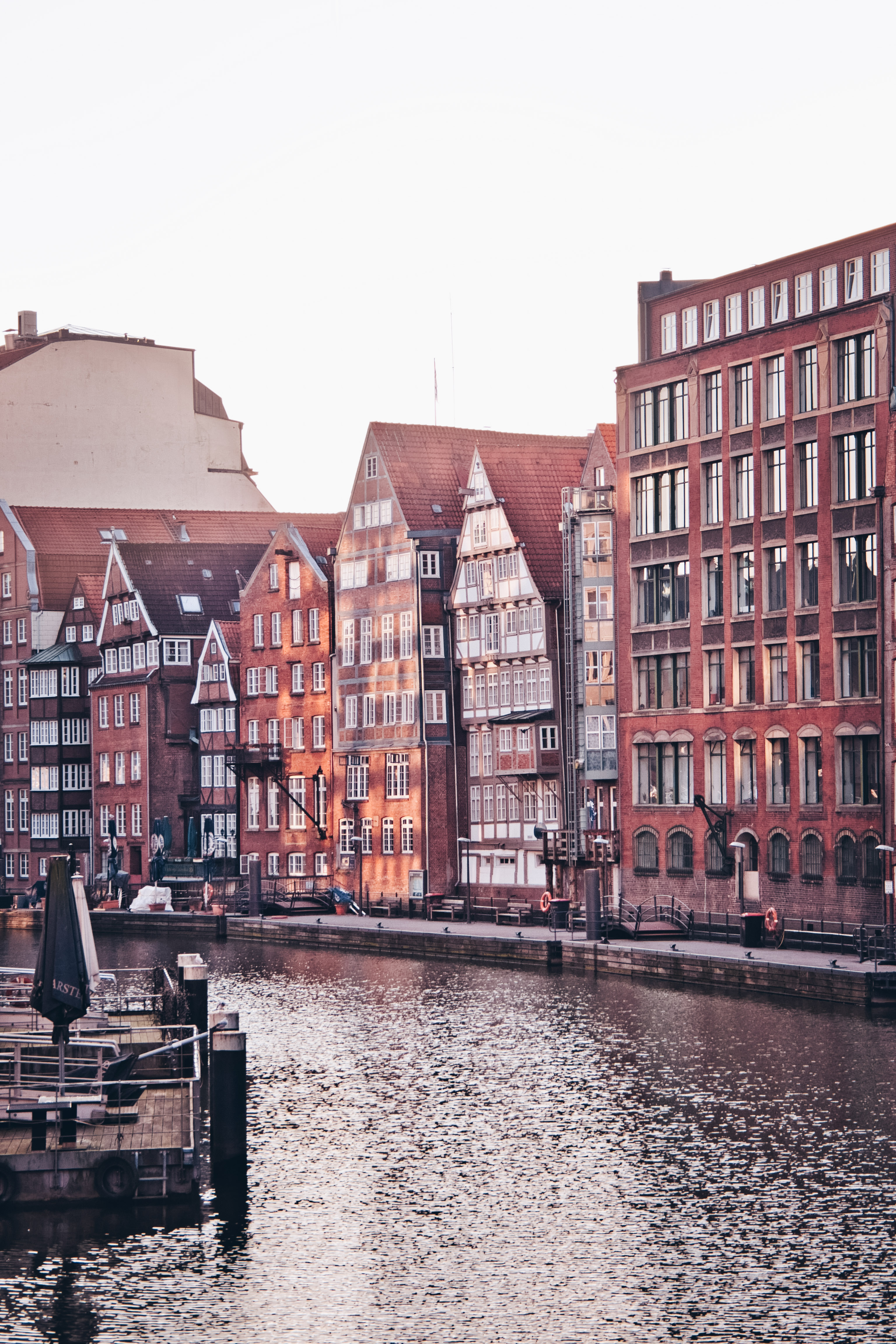
The most popular way to travel from Sweden to Germany
The most popular way to travel from Sweden to Germany is by plane. Nearly 3/4s of our customers say taking a flight is their preferred way to make this trip. It’s easy to see why.
Flights from Sweden to Germany
Flying offers the fastest way to get from Sweden to Germany. A Sweden to Germany flight can be completed in just one hour and forty-five minutes. Even if you account for trips to and from the airport and waiting in the flight lounge, a flight from Sweden to Germany is the fastest travel option by far.
However, there are some benefits to traveling from Sweden to Germany via other methods.
Buses from Sweden to Germany
Taking a bus from Sweden to Germany is the cheapest way to make this trip. Bus tickets from Sweden to Germany can cost as little as $79, and you’ll get to enjoy some beautiful scenery throughout your trip.
Trains from Sweden to Germany
Train tickets from Sweden to Germany are more affordable than flights but cost slightly more than bus tickets. They can cost as little as $98 for a one-way trip.
Taking a train from Sweden to Germany gives you the opportunity to experience the beautiful countryside. You’ll pass through some incredible waterways and will see parts of Sweden and Denmark that you’ll miss when flying.
Cheapest tickets to travel from Sweden to Germany
If your goal is to find the cheapest tickets from Sweden to Germany, then taking a bus is going to be your best option. Omio can help you find bus tickets from Sweden to Germany at the best prices possible.
It’s also worth looking at the train from Sweden to Germany prices. These tickets may only be around $20 more than taking a bus, but you will have a more enjoyable experience with luxuries like a dining car and more comfortable bathrooms.

A river runs through central Hamburg. Source: Unsplash
How many hours do I need to travel from Sweden to Germany?
The fastest route between Sweden and Germany is flying from Stockholm to Berlin, which takes about one hour and forty-five minutes on average. Flights to other parts of Germany aren’t much longer. For example, flying from Stockholm to Munich will take an average of about two hours and ten minutes.
If you want to travel the distance by bus or train, then the length of your trip will depend on where you depart and arrive. For example, there is a high-speed ferry between Ystad in Sweden and the Rügen Islands in Germany that only takes two hours and thirty minutes.
However, if you want to go from Stockholm to Berlin by train, it will take an average of around 13 hours and 43 minutes. Buses may take even longer than that, with an average trip time of around 20 hours and 21 minutes, depending on when you leave and where specifically you plan on going in Germany.
What companies run services between Sweden and German
Train providers
Deutsche Bahn is the best company for taking a train between Sweden and Germany. It operates highly reliable routes and offers a variety of seating options to ensure you have the most comfortable travel possible from Sweden to Germany.
Bus providers
FlixBus is the best bus company for services between Sweden and Germany. It’s extremely affordable, and the seats are comfortable and roomy enough to doze off for a few hours while you pass the time.
Airlines
EasyJet and Norwegian Air are the two best options for flights from Sweden to Germany. EasyJet provides the most affordable tickets possible, whereas Norwegian Air offers a bit more comfort and convenience in exchange for a slightly higher average price per ticket.
The most popular routes from Sweden to Germany
There are many ways to travel between Sweden and Germany. Here’s a look at some of the most popular routes between these two countries.
- Stockholm to Berlin: The distance between these two cities is 1,036 kilometers. Nonstop flights from Stockholm to Berlin take around one hour and forty minutes. Trains take 13 hours and 45 minutes, and buses take around 20 hours.
- Stockholm to Munich: There are about 1,626 kilometers between Stockholm and Munich. Nonstop flights take about two hours and ten minutes to complete. Trains take around 18 hours and 54 minutes, and buses take about one day and nine hours.
- Stockholm to Hamburg: These two cities are approximately 982 kilometers from one another. Nonstop flights from Stockholm to Hamburg take around one hour and thirty-five minutes to complete. Trains take about 11 hours and 16 minutes, and buses are about 17 hours and 39 minutes.
The most popular stations for departure in Sweden and arrival in Germany
There are plenty of train stations and several airports you can use to travel between Sweden and Germany. Here are a few of the most popular choices for travelers from Sweden.
- < a href="https://www.omio.com/airports/sweden/stockholm/stockholm-arlanda-airport-arn">Stockholm Arlanda Airport is Sweden’s largest airport and offers the most flying options to European destinations like Germany.
- Stockholm Central Station is the best station for train departures to Germany. It offers the most routes to choose from and is where you’ll find the majority of the Deutsche Bahn train options we’ve covered on this page.
- Berlin Brandenburg Airport is the best airport for flying into Germany. It’s located in the nation’s capital and offers the most flight arrivals to choose from for visitors from Sweden and most other countries.
- Munich’s Franz Joseph Strauss Airport is the primary international airport of Munich and is where you’ll find the most arrival options for Southern Germany.
- Hamburg Central Station is the best station to use if you plan on traveling to Northern Germany by train. It offers many connections to the rest of Germany and Europe.

Brandenburg Gate is one of Berlin’s biggest attractions. Source: Unsplash
Destinations & highlights in Germany
Germany is a diverse country with many unique attractions to enjoy. Some of these are located in the countryside, but most are in Germany’s major cities. We’ll highlight some options below that are perfect for travelers from Sweden to explore.
- Berlin: Berlin is the most visited city in all of Germany. There are endless things to see here, such as the Brandenburg Gate, the Tiergarten, Museum Island, and the always-interesting streets of Kreuzberg.
- Munich: Munich is the second-most visited city in Germany, with a list of things to do that rival Berlin. You can visit Neuschwanstein Castle, shop around Marienplatz, see a Bayern Munich game at Allianz Arena, or just walk around exploring the many interesting shops and side streets you’ll find throughout the city. Plus, if you visit in October, you’ll be able to enjoy Oktoberfest, which is a truly unique experience.
- Hamburg: Hamburg is a Northern German port city, which makes it an easy destination for travelers from Sweden. The Norderelbe runs right through it, which has created a really fascinating topography that’s fun to just walk around and explore. There are also plenty of museums, restaurants, shops, and more to experience in Hamburg.
- Frankfurt: Frankfurt is a central German city with many attractions to explore. From the Palm Gardens and Alte Oper to the Goethe House and Senckenberg Naturmuseum, there’s something for everyone to enjoy here. Plus, Frankfurt’s central location makes it a great stopping point as you travel from a Northern German city like Berlin to a Southern one like Munich.
- Dresden: Dresden is another German city with plenty to offer. It’s located in the Southeast portion of the country, near the German-Czech Republic border. This makes it a good stopping point for travelers who wish to continue their trip to Prague. But Dresden is more than a layover; it’s home to some wonderful attractions, such as the Dresden Castle, Fraueunkirche Dresden, and the Old Masters Picture Gallery.
Best time to travel from Sweden to Germany
The best time to travel between Sweden and Germany is between June and September. This is when the weather is warmest, so you’ll be able to enjoy many outdoor activities in Germany, such as exploring beer gardens, strolling through historic cities, and lounging in parks and open-air cafes.
That being said, everyone else wants to travel from Sweden to Germany in the late spring and summer as well. This means that ticket prices for air, bus, and train travel tend to increase around this time, along with the cost of accommodation.
If you want to travel to Germany and save some money while doing so, it makes sense to visit in the early spring or late fall. The weather won’t be as good, but you’ll still be able to enjoy all of the wonderful museums, operas, and other indoor attractions available throughout Germany.